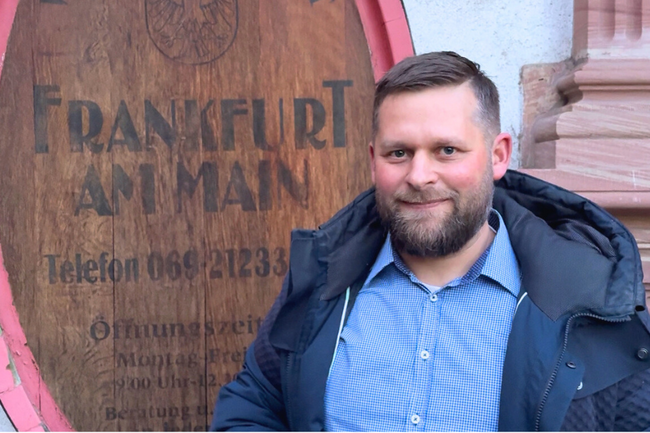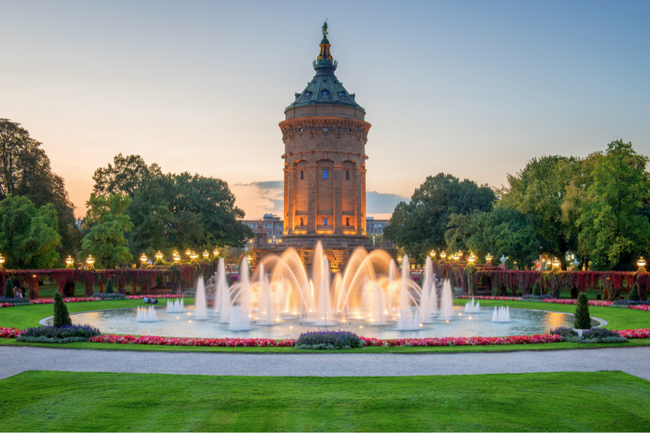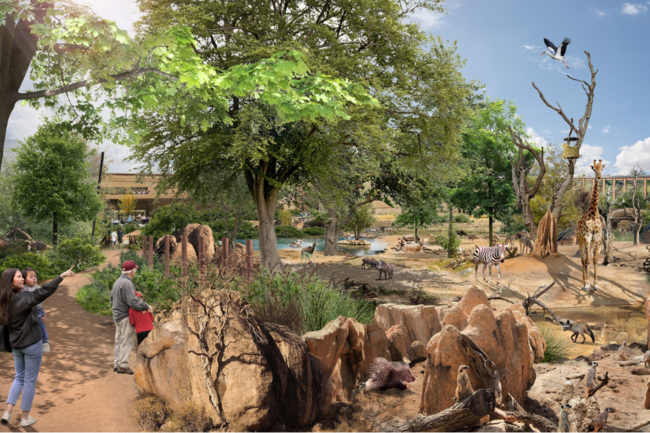While it is still gray and uncomfortable in the rest of the city, it is already the beginning of spring in the Palmengarten. A true blaze of color and an enchanting sea of blossoms chase away the spring blues here. The hard-working staff of the Palmengarten have planted thousands of daffodils, tulips, hyacinths, crocuses, primroses and primroses of various varieties in the gallery at the Palmenhaus, flanked by hazel bushes, feather bushes, forsythia and rock pear. This has created a veritable feast of colors.
The colorful early bloomers stretch their blossoms up between arches and pavilions - the Palmengarten's gallery team took its cue from historical models when designing this year's spring flower show. "This is what a spring garden might have looked like in the days of the garden's founder, Heinrich Siesmayer," says climate department head Rosemarie Heilig. "With this exhibition, we bring the anniversary year at the Palmengarten to a close. The garden team has - despite some pandemic-related hurdles - realized a considerable number of projects during this time: the historical visual axes, the large anniversary exhibition, the opening of the Flower and Butterfly House are just three among many. They have delighted visitors and will continue to do so."
The effort put into creating the spring flower show in the gallery has been worthwhile and will certainly be appreciated again by the visit of numerous guests. Initial preparations for the show were made several months ago: Already at the end of September, the bulbs, of which more than 50,000 were needed for the exhibition, arrived at the nursery. For the gardeners it is then a matter of sorting, potting and watering. They prevent premature sprouting with darkening film, regulate the temperature and thus determine the time of flowering. "The nursery takes care to raise varieties that can be planted outdoors after the end of the exhibition. That, too, is a contribution to sustainability," Heilig says. "Some guests may then wonder about a daffodil lying limply in the bed. But this is desired: the plants from the flower show are allowed to wilt in peace in the open field. They retreat back into their storage organs to sprout again from the soil next spring."
It is still too early in the year to encounter daffodils and co. outdoors. "But also here blooms our visitors already at the beginning of February something", says palm garden director Katja Heubach. For example, the witch hazel, whose blossoms also delight the first insects that come looking for food. Bodnant snowball, mahonia, winter jasmine, various varieties of snowdrops and also winter roses are also among the plants that herald the blooming garden year.
"Color in the garden is a particularly great source of joy in dreary winters," says Heubach. But it could also trigger apprehension. That is, when everything seems to be blooming and sprouting earlier than in the past. Statistics from the German Weather Service show that winters are getting shorter and shorter because spring is arriving earlier and earlier. This phenomenon can be observed all over the world - in the apple blossom in Germany and especially in the cherry blossom in Japan, which has been documented for centuries - and thus provides clues to the changing climate.
"The Palmengarten and the Botanic Garden have also been dedicated to observing so-called phenological events for some time," says Heubach. Phenology describes the sequence of biological development processes; for plants, these are leaf development, flowering, fruiting and aging. Both gardens are part of the global PhenObs network founded at the University of Jena in 2017, in which scientists, students and citizen scientists are addressing the question of what influence climate change has on the phenology of herbaceous plant species. "Admittedly, it always happens that an April is particularly dry and warm or a May is particularly fresh and wet. Such weather phenomena have always existed. Weather is a short-term event. Climate, on the other hand, describes periods of time that we have to observe over years in order to obtain reliable data. In the case of the plants in the spring flower show, we consciously intervene in the course of development by regulating temperature and light. In doing so, we act as environmentally and climate friendly as possible. Enjoy the spring in the show house - and also have a look at its first messengers in the open field. I wish you much pleasure thereby!"
The spring flower show runs until Sunday, February 20. But spring has more to offer: On March 3, the Flower and Butterfly House finally reopens to the public. Also in early March, the redesign of the Goethe Garden is scheduled to be completed as another module of the Palmengarten's flagship theme, "Flower and Pollinator Ecology." The Goethe Garden offers information and at the same time inspiration for the insect-friendly design of your own garden or balcony.
Finally, another spring highlight is to take place on the weekend of March 19/20. Then at the green stock exchange again many kinds of plant rarities are offered.
The garden opens in February daily from 9 to 16 o'clock, starting from March the opening times extend to 19 o'clock. Currently, the 2G-Plus regulation is in effect throughout the Palm Garden. Up-to-date information on the regulations and opening hours can always be found on www.palmengarten.de













